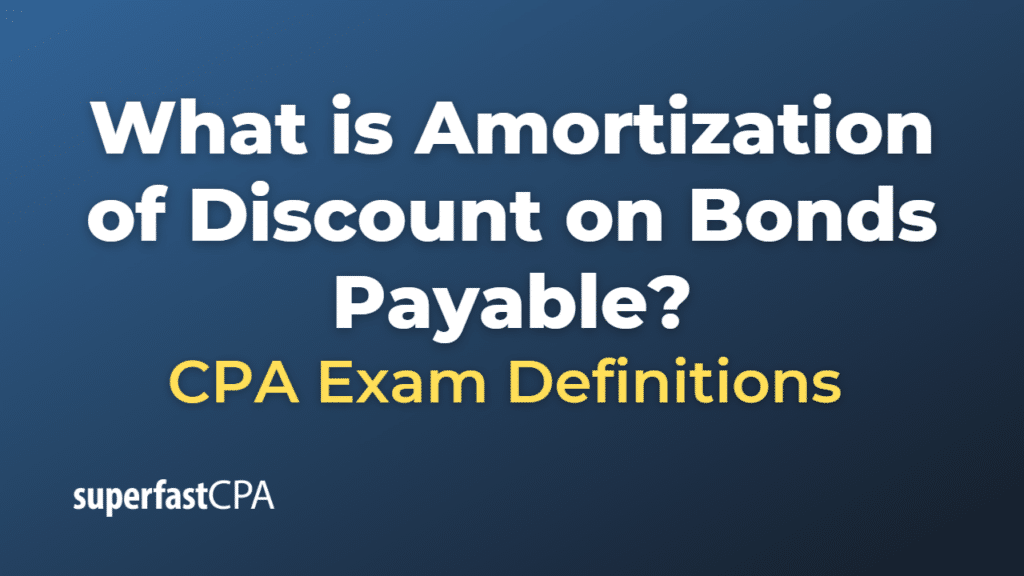Amortization of Discount on Bonds Payable
Amortization of discount on bonds payable refers to the process of gradually reducing the discount on bonds payable over the life of the bonds until the bonds’ carrying value equals their face value at maturity. The discount on bonds payable occurs when a company issues bonds at a price lower than their face value, typically due to prevailing market interest rates being higher than the bonds’ stated interest rates.
The discount on bonds payable is treated as a contra-liability account, which means it reduces the bonds payable balance on the balance sheet. Over the life of the bonds, the discount is amortized, and the carrying value of the bonds payable increases.
Amortization of the discount is a non-cash expense that increases the interest expense on the income statement. There are two methods to amortize the discount on bonds payable: the straight-line method and the effective interest method.
Example of Amortization of Discount on Bonds Payable
Let’s use the effective interest method to amortize the discount on bonds payable. We will use the same example as before.
Company ABC issues a 5-year, $100,000 bond with a stated interest rate of 5%. Due to prevailing market interest rates being higher, the bonds are issued at a discount, and the company receives $95,000.
The discount on bonds payable is $5,000 ($100,000 face value – $95,000 issue price). Let’s assume the market interest rate is 6%. The bond pays interest annually.
To calculate the amortization of the discount using the effective interest method, follow these steps:
- Determine the bond’s carrying value at the beginning of the period. In this case, it is $95,000.
- Calculate the interest expense using the market interest rate (6%). For the first year, the interest expense is $5,700 (6% x $95,000).
- Calculate the cash interest payment using the stated interest rate (5%). For the first year, the cash interest payment is $5,000 (5% x $100,000).
- Determine the amortization of the discount by subtracting the cash interest payment from the interest expense: $5,700 – $5,000 = $700.
- Update the carrying value of the bond by adding the amortized discount: $95,000 + $700 = $95,700.
- Repeat these steps for each period until the bond’s carrying value equals its face value at maturity.
In this example, Company ABC will amortize $700 of the discount on bonds payable in the first year using the effective interest method. The bond’s carrying value will increase to $95,700, and the process will continue until the bond’s carrying value reaches $100,000 at the end of its term.













